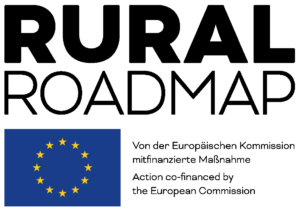
Lipová, Ústecký kraj, Czech Republic
The municipality Lipová is located in the Northern Czech Republic in the region Ústecký kraj and is a part of the so-called “Schluckenauer Zipfel”. The muniyipality of this area have been collaborating closely for around 15 years and lobby for the complex conditions in the border region, even in Prague. There is a shortage of skilled workers, wages are comparatively low and the region lacks adequate medical services. Lipová also collaborates with other municipalities across the border as a part of the Euregio Elbe and the Euregio Neiße and is directly working with several Saxon municipalities. These collaborations result in international events such as an ice skating competition, holiday camps, the communal puppetry, combination tickets for museums on both sides of the border and much more.
In 1945, about two thirds of around 3000 inhabitants were expelled from Lipová, formerly known as Hainspach, and numerous Czechs migrated there from the heartland. This led to a lack of social integration and shared village history. Not until the early 2000s, after the political turnaround, the community was revitalized by the new generation. This generation succeeded to establish a new identity and new traditions within the community by organizing various initiatives, celebrations, associations and task groups. A calligraphically and artistically impressive chronicle as well as the new “corporate design” and social network activity are some of the results of these efforts. Even former residents, who were expelled in 1945, or their offspring have actively supported these changes and became part of them. Other important players in the development process include the church and Caritas, who provide important impulses locally and transnationally.
These new initiatives stopped the ongoing population decline, there are first “return residents”, many prefer to work in Saxony but live in Lipová. Key employers of the region include social services such as care, retirement and children’s homes, and other care facilities, which are well represented in the region. Inclusion is an important issue; particularly children from the facility are actively included in the village projects.
Basic supply within the municipality is good. Internet connection quality is above average, the town house also serves as a part-time doctor’s office which is accompanied by a mobile pharmacy. The open-air cinema, which was originally established in the 1960ies, was revitalized in 2018, and the village boasts a good sports infrastructure, which is already planned to be expanded further.
In regards to cultural heritage, the community and the municipality focused on the renovation of some 80 small and large monuments such as roadside calvaries and chapes, valorizing the village further. The challenging history of the region and its effects on the Lipová of today are also actively incorporated.
In cooperation with architecture students from the University of Prague, a project to revitalize the village center was realized. It included the renovation of “Umgebindehaus Nr. 424”, a half-timbered house which was refunctioned and now serves as a community center. The village church was also upgraded through smart collaborations with the municipality.
The municipality offers numerous canopy roads, five ponds (totally around 17 hectares), forests and copious biotopes. Many indigenous plants and animals that had been previously extinct are returning and revitalize the healthy natural spaces. “bio centers” and “bio corridors” were created for this reason. Local beekeeping with its some 120 hives is also actively supported. This palpable concern for the diversity of nature was amplified also by multiple floods, which resulted in an increased interest in flood protection and its interconnection with natural space development in Lipová. River meadows were renaturalized and old ponds were reactivated as biotopes and reservoirs. The potentials for soft recreational tourism offered by maintaining and designing the natural space was recognized.
Lipová made clever use of a strengths-and-weaknesses-analysis, included its residents and created a strong community, successfully transforming the dominant lack of perspectives into a spirit of optimism. The examinations of the past, exemplary concern for natural spaces and the transnationally oriented development process rooted in various cooperations have opened new perspectives for the region.
Evaluated: 2020








